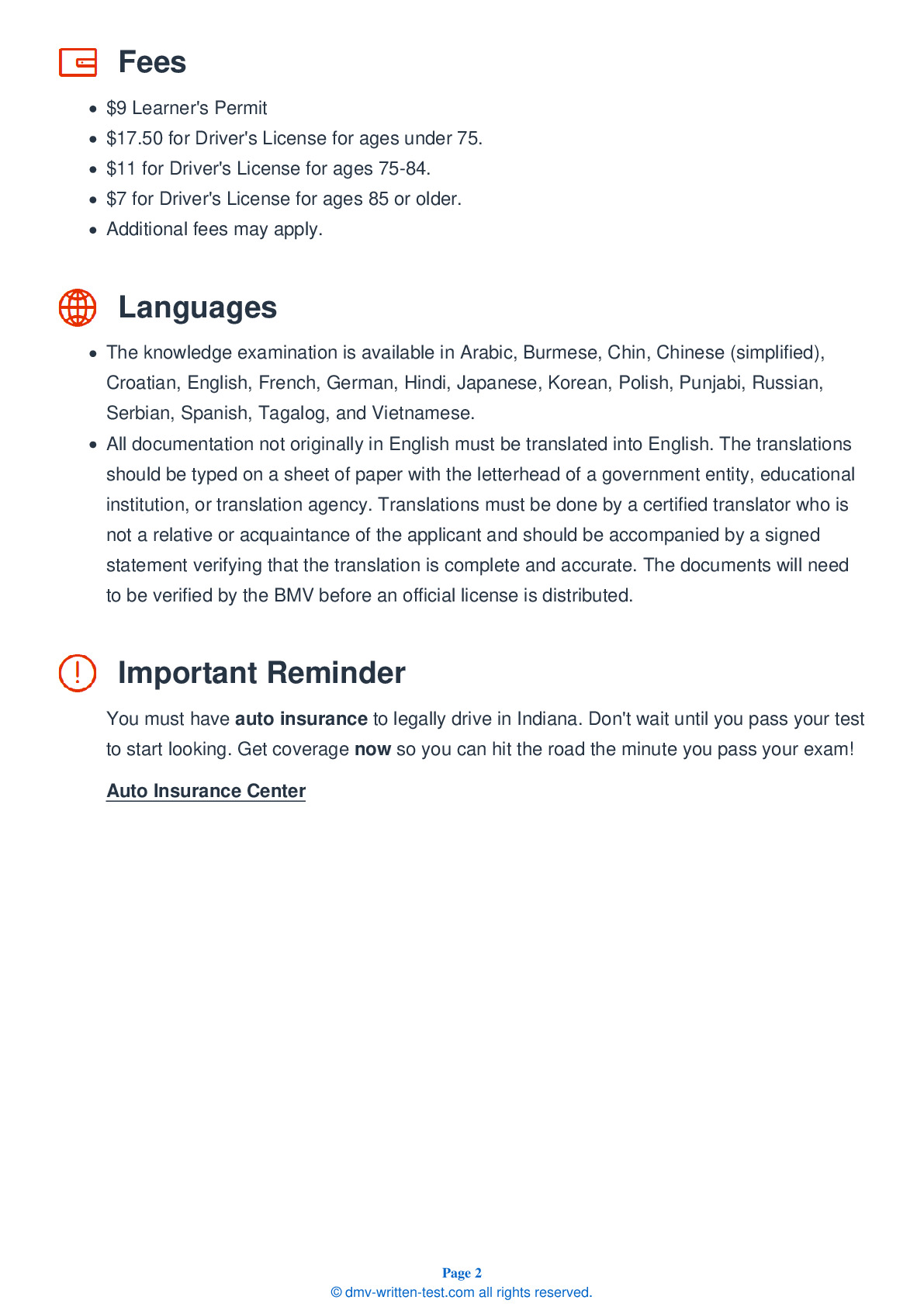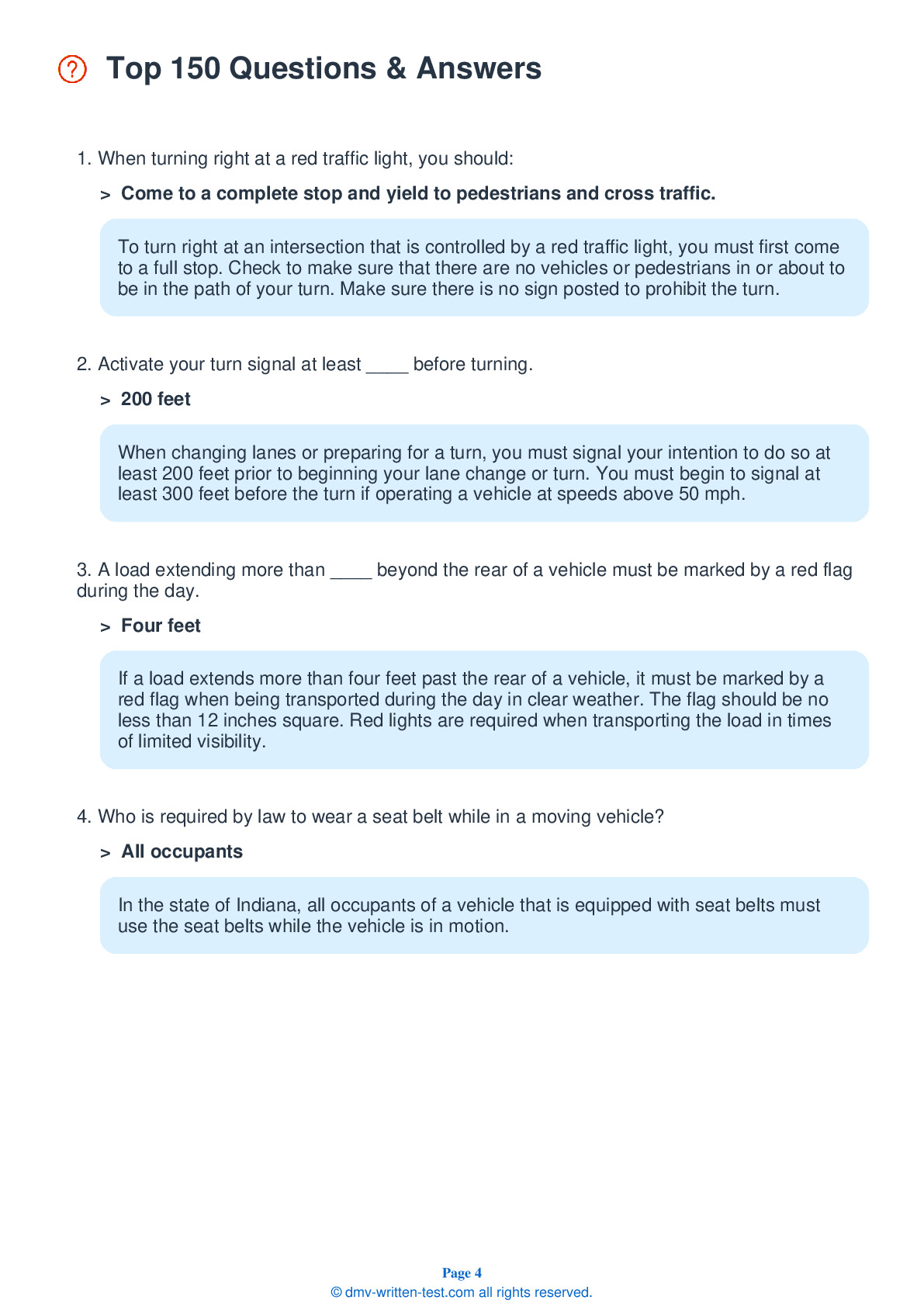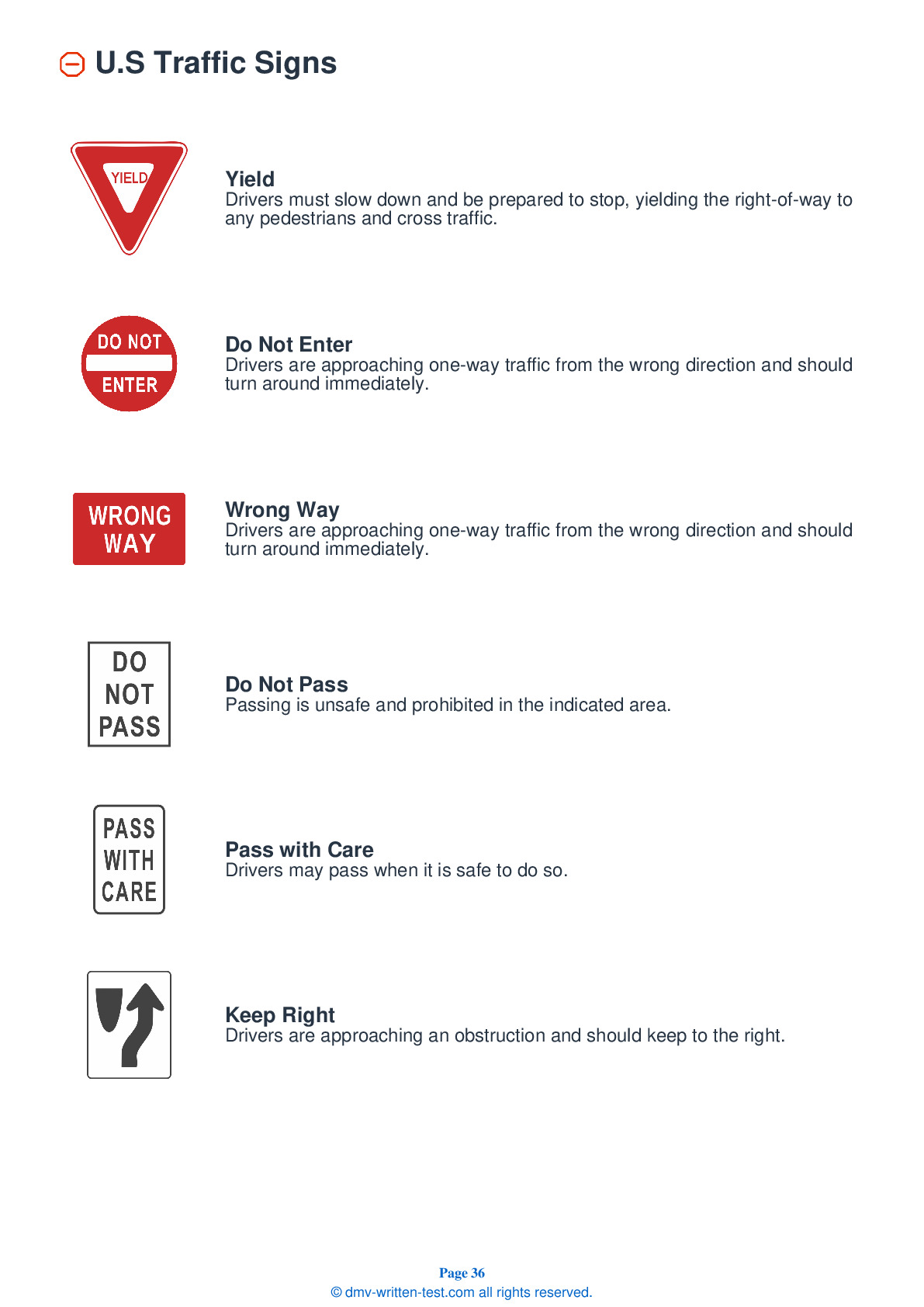2025 Indiana Permit Test 13
The following questions are from real DMV written tests. These are some of the actual permit questions you will face in Indiana. Each permit practice test question has three answer choices. Select one answer for each question and select "grade this section." You can find this button at the bottom of the drivers license quiz. For a complete list of questions and answers for Indiana please visit https://cheat-sheets.dmv-written-test.com/en/indiana/car.
Number of Tests
Number of Question
Passing Score
17. When you are in a line of traffic that is crossing a railroad track that has no signals or gates:
Explanation
If you are following another vehicle at a railroad crossing, check to make sure you have enough room to get all the way across before you drive onto the tracks. You should never try to pass another vehicle as you approach or cross a railroad crossing. Always check for trains before crossing any railroad tracks.
18. You notice that the driver in the vehicle ahead of you is driving with one hand and talking to a passenger. You should:
Explanation
Do not become distracted by looking at passengers, attempting to find something in your vehicle, looking at reading material, sightseeing, or daydreaming while driving. If a driver near you seems distracted, allow them extra space because the risk of an accident is increased by their inattentiveness.
19. What kinds of drugs can affect your driving ability?
Explanation
Many kinds of drugs can impair your ability to drive. This includes illegal drugs and legal prescription or over-the-counter medications. It can be a criminal offense to drive while impaired by any drug.
20. On slippery roads, you should:
Explanation
You should slow down at the first sign of rain, snow, or sleet, all of which can create slippery road conditions. When conditions on the road are less than ideal, safety may require that you drive more slowly than the posted speed limit.
21. This sign means:

Explanation
Warning signs prepare drivers for upcoming road conditions and hazards and are usually yellow with black markings. This sign warns drivers that there is an upcoming sharp turn and that they should lower their speed accordingly.
22. If you stop along the road at night:
Explanation
If you stop along the road at night, turn on your emergency flashers and leave your low beam headlights turned on. Be sure that other road users will be able to clearly see your vehicle.
23. Compared to driving during the day, driving at night is:
Explanation
Driving at night is more dangerous than driving during the day for several reasons. It is harder to see in the dark, you may be temporarily blinded by the glare from other vehicles' lights, and there are likely to be more drivers on the road who are tired or under the influence.
24. If your wheels drop off the pavement and onto the shoulder of the road, you should:
Explanation
If your wheels drop off the pavement and onto a low shoulder, you should reduce your speed without braking and very carefully turn back onto the pavement. Be aware of any nearby traffic when re-entering the road.
25. Allow a larger space cushion than usual when stopping:
Explanation
You should allow more space in front of your vehicle than usual when you are stopped on an uphill slope. If the vehicle in front of you rolls backward toward your vehicle when traffic begins to move again, it is less likely that there will be a collision.
26. A flashing yellow light at an intersection means that you should:
Explanation
A flashing yellow light at an intersection means "caution." If you approach such a light, slow down, look, and proceed with care.
27. Railroad crossings should always be considered:
Explanation




